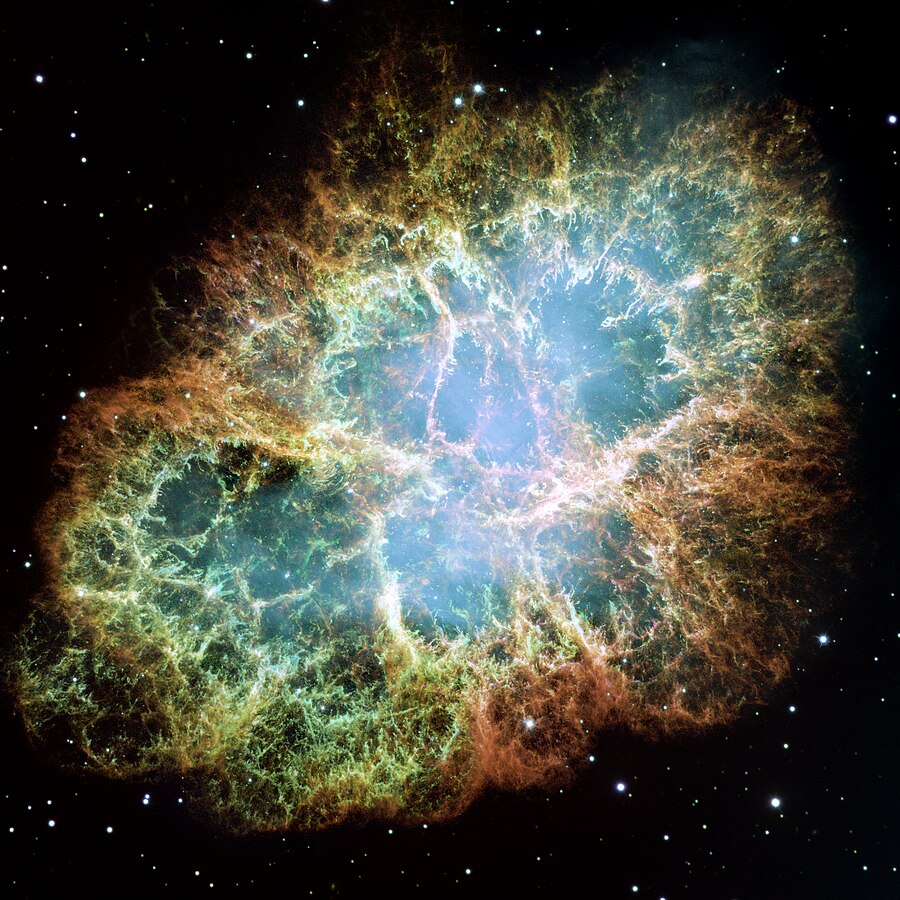Fail:Crab Nebula.jpg

Saiz pralihat ini: 600 × 600 piksel. Leraian-leraian lain: 240 × 240 piksel | 480 × 480 piksel | 768 × 768 piksel | 1,024 × 1,024 piksel | 2,048 × 2,048 piksel | 3,864 × 3,864 piksel.
Fail asli (3,864 × 3,864 piksel, saiz fail: 13.84 MB, jenis MIME: image/jpeg)
Sejarah fail
Klik pada tarikh/waktu untuk melihat rupa fail tersebut pada waktu itu.
| Tarikh/Waktu | Gambar kenit | Ukuran | Pengguna | Komen | |
|---|---|---|---|---|---|
| semasa | 14:56, 25 November 2012 | 3,864 × 3,864 (13.84 MB) | Hawky.diddiz | Lossless optimization | |
| 10:13, 17 Mei 2012 | 3,864 × 3,864 (14.61 MB) | Metrónomo | Higher quality | ||
| 09:31, 20 Jun 2009 | 3,864 × 3,864 (6.18 MB) | Tryphon | Higher resolution. | ||
| 21:26, 9 Mac 2006 | 2,224 × 2,212 (3.08 MB) | Stianbh | larger version | ||
| 00:35, 16 Januari 2006 | 400 × 400 (23 KB) | DragonFire1024 | Image: A New View of the Helix Nebula Source: http://hubblesite.org/gallery/album/entire_collection/pr2004032d/ Copyright Notice: Material credited to STScI on this site was created, authored, and/or prepared for NASA under Contract NAS5-26555. Unless |
Penggunaan fail
11 buah laman berikut menggunakan fail ini:
Penggunaan fail sejagat
Fail ini digunakan oleh wiki-wiki lain yang berikut:
- Penggunaan di af.wikipedia.org
- 1054
- Wikipedia:Uitgesoekte herdenkings/22 April
- Wikipedia:Uitgesoekte herdenkings/Julie
- Wikipedia:Uitgesoekte herdenkings/April
- Wikipedia:Uitgesoekte herdenkings/4 Julie
- Supernova
- Ster
- Wikipedia:Beeld van die week/2012
- Wikipedia:Voorbladbeeld week 2 2012
- Newel
- Kompakte ster
- Veranderlike ster
- Lys van Messier-voorwerpe
- Krapnewel
- Portaal:Sterrekunde/Inleiding
- Portaal:Sterrekunde
- Hemelliggaam
- Lys van planetêre newels
- SN 1054
- Supernova-oorblyfsel
- Sterevolusie
- Penggunaan di als.wikipedia.org
- Penggunaan di am.wikipedia.org
- Penggunaan di anp.wikipedia.org
- Penggunaan di ar.wikipedia.org
- مجرة
- نجم
- سنة
- تطور النجوم
- ثلاثي الكربون
- فجر
- مستعر أعظم
- بوابة:علم الفلك/مقالة مختارة
- شهاب
- مطلع مستقيم
- جمعية منسا الدولية
- علم الفلك خارج المجري
- عنقود نجمي
- فيلا (أقمار اصطناعية)
- الشلياق
- خرزات بيلي
- راية الأرض
- سمت
- نظرية الحالة الثابتة
- توهج القمر الصناعي
- بوابة:الفيزياء/بوابات ذات علاقة
- الظهر
- اقتران (علم الفلك)
- علم الهيئة
- مقراب راديوي
Lihat banyak lagi penggunaan sejagat bagi fail ini.
